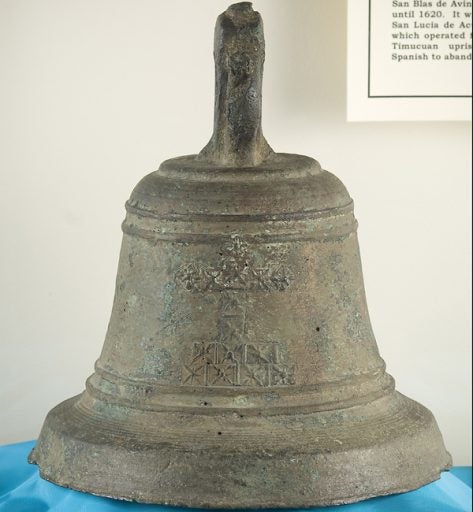Inspired by the BBC series “A History of the World in 100 Objects,” a similar project chronicling Central Florida’s past from early native civilizations through the state’s urbanization was completed recently by a UCF professor and his students.
Associate professor Robert Cassanello said the 50 video podcast episodes created by his Historical Documentary and New Media class tell the story of “the journey that got us all here.” “A History of Central Florida” took about two years working part-time to research, write, interview and record the stories that helped shape the region.
Cassanello said when he was in graduate school he studied under urban historian Raymond Mohl at Florida Atlantic University, who impressed on students to be curious about where they live, because that community’s history is as important as anywhere.
“He always felt he wanted to know the history of his community and make that accessible to people, so he has bodies of work from all the places he lived and worked as a scholar. So I, too, always wanted to ask questions and learn the history of my own back yard,” Cassanello said. “I think this project is my process to learn about where I live and work.”
Looking at the historic objects featured in the podcasts, viewers can learn about life in Central Florida through the sacred (a 1600s Spanish mission bell from the Ocala area) to the mundane (a “mosquito beater” of dried palm fronds tied together by rope and used to kill the insects as malaria spread across the state in the late 19th century).
From the ancient (textiles at the Windover area of Brevard County, where native peoples buried their dead 7,000 to 9,000 years ago) to the space age (Orlando astronaut John Young’s flight suit from his days as a space shuttle commander).
And from the segregationist past (Jim Crow signs denoting different areas for blacks and whites) to company scrip (such as Disston Land Co.’s payment system to workers typically in remote areas).
“The most interesting aspect of our series, in my opinion, is that we are able to demonstrate how something that could be considered mundane can become the catalyst for telling really interesting and impactful stories,” said Katie Kelley, who will graduate next spring with her master’s in history.
An example from one of the podcasts she wrote is the Russian samovar, a free-standing tea brewer that was brought to Florida in the 19th century by a family of Russian immigrants.
“It may seem like a somewhat mundane thing, but looking at what it represents tells a really important story about how immigrants try to hold on to certain aspects of their culture and how that, in turn, influences the places they immigrate to,” Kelley said. “Having only one trunk in which to pack belongings, this family chose to bring this huge item which took up a great deal of space. This, of course, speaks to the cultural relevance of the tea ritual in Russia and this family’s desire to maintain aspects of their own culture and traditions. This story demonstrates a lot of interesting ideas about the immigrant experience and it is told through an old, beat-up tea brewer.”
Student Chip Ford said the most interesting thing he learned from this experience is that local history is tied into larger historical narratives.
For example, in the podcast titled “Salt and Pepper Shakers,” the narrative focuses on how the history of the shakers stenciled with flamingos and “Florida” ties into a broader narrative of Florida tourism and international trade because the items were manufactured in Japan.
“This interconnection between national historical and world historical narratives with local historical narratives was something that I believe is evident in all of the podcasts,” said Ford, who will graduate in December with his master’s in history.
Cassanello said his classes worked with 17 Central Florida museums and historical societies to select the studied objects. The project also was supported by UCF’s RICHES (Regional Initiative to Collect the History, Experiences and Stories of Central Florida).
Cassanello, executive producer of the series, said he made two of the early episodes as examples, but then the students produced the rest of the installments. Some of the students had dedicated tasks, such as Bob Clarke as photographer and Chip Ford as video editor. Kelley and the other participating students – Kendra Hazen, Daniel Velásquez, Bethany Dickens, Ella Gibson and Kevin Stapleton – wrote scripts, recorded narration and provided other services.
The Florida Historical Society recognized the work that went into the project and awarded the series the Hampton Dunn Internet Awards for both 2014 and 2015, and Ford said he hopes the series stirs interest in the Central Florida public to support and visit museums.
“I think the most salient theme [of the series] is the way in which people across time created community,” said Cassanello, who now is researching the segregation and integration of public transportation. “People are just trying to create community day after day and this is what we recorded.”
“A History of Central Florida” can be accessed for free on iTunes and the project’s page on the John C. Hitt Library website.
